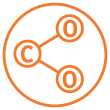Number of litter items for different site types
Key Finding
In 2018–19, the average number of litter items was higher in Queensland than Australia across a majority of site types, particularly at beaches, highways, recreational parks and shopping centres. The notable exceptions to this were both industrial and retail strips which were both lower than the comparative national average.
The National Litter Index provides estimates of litter across 8 site types:
- beaches (jetties, boat ramps, beaches)
- car parks (open space public car parks)
- highways (major roads bounded by vegetation)
- industrial sites (streets within an industrial area)
- recreational parks (parks with a playground)
- residential sites (streets within a residential area)
- retail strips (areas in front of a strip of shops)
- shopping centres (shopping centre entrances).
In 2018–19, shopping centres (95 items) and retail strips (79 items) had the highest number of litter items for Queensland and Australia respectively, while residential sites (29 items) had the lowest number of litter items for Queensland and recreational parks (16 items) had the lowest for Australia.
There is a large variation in the litter levels, with average litter levels at beaches, highways, recreational areas and shopping centres in Queensland being at least 50% higher than their comparative Australian averages in 2018–19.
In 2018–19, litter at shopping centres and retail strips accounted for about 39% of all Queensland litter across the 8 site types, while residential and recreational parks only accounted for approximately 15%.
More information:
Relevant Sustainable Development Goals’ targets
Download data from Queensland Government data
Metadata
Average count of litter items per 1,000m2 by site type for Queensland and Australia, 2005–2006 to 2018–2019 (data from the National Litter Index).










